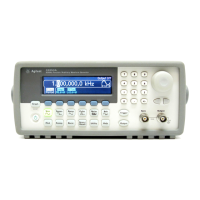58
Chapter 4 Calibration Procedures
Performance Verification Tests
4
Amplitude and Flatness Verification Procedures
Special Note: Measurements made during the AC Amplitude (high-
impedance) Verification procedure (see page 61) are used as reference
measurements in the flatness verification procedures (beginning on
page 62). Additional reference measurements and calculated references
are used in the flatness verification procedures. Photo-copy and use the
table on page 59 to record these reference measurements and perform
the calculations.
The flatness verification procedures use both a DMM and a Power Meter
to make the measurements. To correct the difference between the DMM
and Power Meter measurements, the Power Meter reference measurement
level is adjusted to set the 0.00 dB level to the DMM measurement made
at 1 kHz. The flatness error of the DMM at 100 kHz is used to set the
required 0.00 dB reference.
The instrument internally corrects the difference between the high-Z
input of the DMM and the 50Ω input of the Power Meter when setting
the output level.
The reference measurements must also be converted from Vrms (made
by the DMM) to dBm (made by the Power Meter).
The equation used for the conversion from Vrms (High-Z) to dBm
(at 50Ω) is as follows:
Power (dBm) = 10 log(5.0 * V
rms
2
)
Flatness measurements for the –10 dB, –20dB, and –30 dB attenuator
ranges are verified as a part of the 0 dB verification procedure.
No separate verification procedure is given for these ranges.

